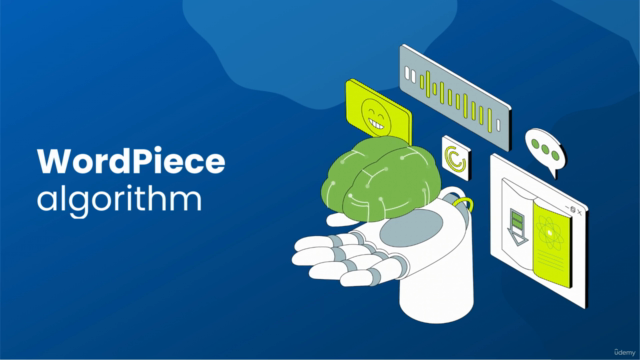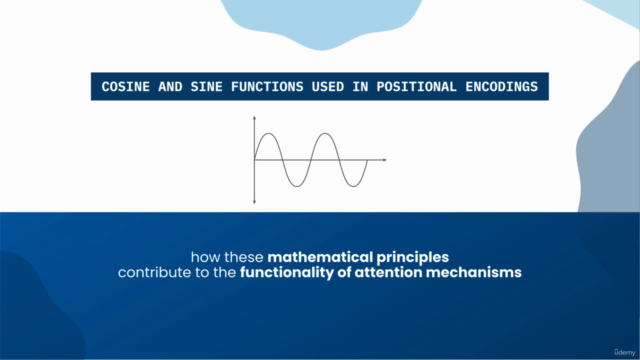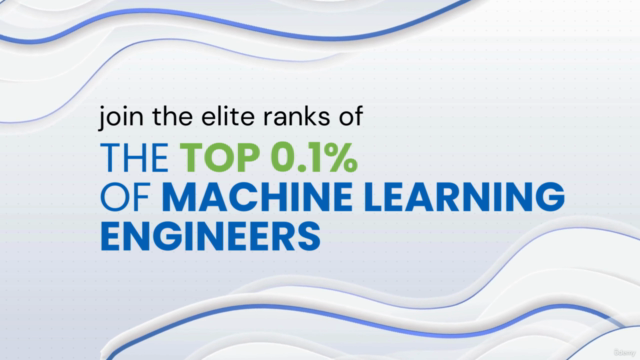Mathematics Behind Large Language Models and Transformers

Why take this course?
🧮 Deep Dive into Transformer Mathematics: From Tokenization to Multi-Head Attention to Masked Language Modeling & Beyond
Course Description:
Embark on a mathematical odyssey with our comprehensive course, Mathematics Behind Large Language Models and Transformers, designed for enthusiasts and professionals who aspire to grasp the intricate mathematics that powers giants like GPT-3, BERT, and other transformer-based models. This is your opportunity to demystify the algorithms that enable these models to process, understand, and generate text with a startling semblance to human language.
What You Will Learn:
-
Tokenization: Dive into the journey of how raw text is meticulously sliced into tokens, using methods like WordPiece, setting the stage for model consumption.
-
Core Transformer Components: Explore the intricate dance of key matrices (K), query matrices (Q), and value matrices (V) in encoding information within transformer architectures.
-
Attention Mechanism Mastery: Delve deep into the attention mechanism, focusing on multi-head attention, where models learn to focus on parts of the input data that matter most for understanding context.
-
Attention Masks and Positional Encodings: Unravel the mystery of how models differentiate between significant and irrelevant data segments through attention masks and learn to maintain the sequence order of words with positional encodings.
-
Bidirectional and Masked Language Models: Grasp the essence of bidirectional models that read context from both left and right sides of a text, and masked language models that predict missing words, enhancing the model's understanding of nuanced meanings.
-
Vectors, Dot Products, and Word Embeddings: Understand how these mathematical constructs are used to create dense representations of words, capturing their meanings in high-dimensional spaces.
Course Highlights:
-
Understanding the Mathematics: Gain a solid grasp of the mathematics behind tokenization, attention mechanisms, and word embeddings.
-
Real-World Application: Learn how to apply these mathematical concepts to real-world problems in natural language processing (NLP).
-
Practical Insights: Receive practical insights into the functionality and application of transformers in various scenarios.
By Completing This Course, You Will Be Able To:
-
Master the Theoretical Underpinnings: Become well-versed in the mathematical theories that form the foundation of transformer models.
-
Innovate with Confidence: Apply your newfound knowledge to innovate and push the boundaries of what's possible in machine learning and AI.
-
Join the Elite: Position yourself among top AI engineers and researchers who understand the transformative power of mathematics in NLP.
Your Journey Awaits:
Embark on this mathematical adventure and unlock the secrets of large language models. With a blend of theoretical knowledge and practical application, you'll be equipped to tackle the challenges of natural language processing with a mathematician's precision and an engineer's creativity. 🌟
Enroll now to transform your understanding of machine learning and take your place among the leaders in AI innovation!
Course Gallery




Loading charts...
Comidoc Review
Our Verdict
With its detailed mathematical focus, this course offers valuable insights into transformer internals. Though repetition may irk some learners and prerequisites assume basic linear algebra knowledge, the 'Mathematics Behind Large Language Models and Transformers' prepares AI professionals for deeper understanding of seminal paper 'Attention is all you need'. Be prepared to study theory without coding examples.
What We Liked
- 'Math Behind Large Language Models and Transformers' dives deep into mathematical concepts, like tokenization to multi-head attention.
- Clear explanations of complex algorithms give learners a solid foundation in transformer architectures.
- Engaging insights on positional encodings, bidirectional language models, vectors, and dot products are well presented.
- Comprehensive content, published in 2024, resonates with research work of AI engineers and researchers.
Potential Drawbacks
- Repetition has been a common theme among learners, with some finding it helpful while others consider it repetitive.
- Expectations management: this course heavily emphasizes theory; coding practices aren't covered—software development skills are not an explicit focus.
- The pace and prerequisite knowledge of linear algebra might present a challenge for absolute beginners, making parts of the course demanding.
- A more engaging training section would benefit learners, as it appears underdeveloped compared to the rich theoretical content.